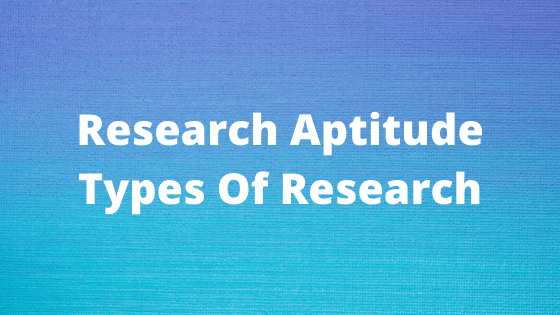Types of research
In order to understand “types of research” in an easy way, we have divided it into 4 boards heading in this post.
- Application Perspective
- Objectives Perspective
- Enquiry Perspective
- Research Approach Perspective
application perspective
what is the use of whatever you are going to research?
Where are you going to apply for it?
The research who addresses these questions, all those types of research are placed under the application perspective.
Application perspective research refers to the study of how a specific technology or product can be used in a particular field or industry. This type of research typically involves identifying the specific needs and challenges of the industry or field, and then determining how the technology or product can be adapted or applied to meet those needs. The goal of application perspective research is to determine the potential value and impact of the technology or product in the context of the specific industry or field.
There are two broad categories:
- Pure Research
- Applied Research
Pure Research
Pure research, also known as basic research or fundamental research, is a type of scientific inquiry that aims to increase knowledge and understanding of a particular subject without any specific practical application or goal in mind. It is conducted to expand our understanding of the natural world and the underlying principles that govern it. Pure research is typically driven by curiosity and the desire to explore new ideas and concepts, rather than by the need to solve specific problems or achieve specific outcomes. Examples of pure research include studies of the origins of the universe, the nature of matter and energy, and the workings of the human brain.
Pure Research involves developing and testing theories and hypotheses that are intellectually challenging to the researcher but may or may not have a practical application at the present time or in the future.
Thus such work often involves the testing of hypotheses containing very abstract and specialized concepts.
The knowledge produced through pure research is sought in order to add to the existing body of knowledge of research methods.
It is also known as Basic Research, which means Gathering Knowledge for knowledge’s sake.
For Example: Developing an instrument, say to measure the stress level in people or finding the best way of measuring people’s attitudes. Tata Institute of Fundamental Research conducts such studies
applied research
Applied research is a type of research that is focused on solving specific problems or addressing specific needs. It is often used to develop new products, technologies, or processes, or to improve existing ones. This type of research is typically conducted by businesses, government agencies, and other organizations, and it is often used to inform policy and decision-making. Examples of applied research include developing new medical treatments, designing more efficient transportation systems, and developing new materials for use in industry.
Applied Research aims at finding a solution to an immediate problem. Most of the research in the social sciences are applied.
Methods that form the body of research methodology are applied to a collection of information about various aspects of a situation, issues, problem, or phenomenon so that the information gathered can be used in other ways – such as for policy formulation, administration, and the enhancement of understanding of a phenomenon.
For example: why have sales decreased during the last quarter?
Objective Perspective
Objective perspective research refers to a type of research methodology that aims to eliminate personal biases and emotions from the research process. The goal is to collect data and analyze it in an objective, neutral, and unbiased manner. This type of research is often used in scientific studies, where the researcher must be able to provide evidence that is free from personal opinions or influences.
Objective perspective research typically involves several steps, including:
Formulating a research question: The researcher must have a clear understanding of the topic they are studying and the question they wish to answer.
Developing a research design: The researcher must decide on the best method for collecting data, such as surveys, experiments, or observations.
Collecting data: The researcher must collect data in a systematic and unbiased manner, using methods such as random sampling to ensure that the sample is representative of the population.
Analyzing data: The researcher must use statistical methods to analyze the data and draw conclusions.
Reporting results: The researcher must present their findings in a clear and unbiased manner, using appropriate statistical tests and measures.
In summary, objective perspective research is a type of research methodology that aims to eliminate personal biases and emotions from the research process and collect data in an objective and unbiased manner. This type of research is often used in scientific studies to provide evidence that is free from personal opinions or influences.
If you examine a research study from the perspective of its objective. “TYPES OF RESEARCH” who addresses “What is the purpose of research?” Questions-Answer, They are all classified in the Objective Perspective category.
Objective Perspective research endeavor can be classified as:
- Descriptive Research
- Correlational Research
- Explanatory Research
- Exploratory Research
Descriptive Research
Descriptive research is a type of research methodology that aims to describe and understand the characteristics of a given population or phenomenon. It is used to gather information about the current state of a particular subject and to identify patterns and trends. Descriptive research is often conducted using surveys, interviews, or observational methods, and the data collected is typically analyzed using descriptive statistics. The goal of descriptive research is to provide a detailed and accurate portrayal of the population or phenomenon being studied, rather than to test hypotheses or make causal inferences.
Descriptive means just to describe something. In descriptive research, we consistently answer “what” and “when” types of questions or search extensively.
A research study classified as a descriptive study attempts to describe systematically a situation, problem, phenomenon, service, or program or provides information about, say, the living conditions of a community or describes attitudes towards an issue.
The main purpose of such studies is to describe what is prevalent with respect to the issues or problem under study.
It is a fact-finding investigation. In descriptive research, definite conclusions can be arrived at, but it does not establish a cause and effect relationship.
Actually, the phenomenon has happened in the past, so we often use the term Ex post facto for descriptive research. The main characteristic of this research of this method is that the researcher has no control over the variables.
He can only report what was happened or what is happening.
Correlational Research
Correlational research is a type of research method that is used to examine the relationship between two or more variables. It is a non-experimental research method, which means that it does not involve manipulating any variables or controlling any conditions. Instead, it simply looks at the relationship between variables as they naturally occur in the real world.
Correlational research is often used to identify potential causal relationships between variables. For example, a researcher may want to know if there is a relationship between a person’s diet and their risk of developing a certain disease. In this case, the researcher would collect data on the diets of a group of people and compare it to their health status. If there is a strong correlation between diet and disease, it may suggest that diet plays a role in the development of the disease.
One of the main strengths of correlational research is that it allows researchers to study variables that are difficult or impossible to manipulate in an experimental setting. For example, it would be unethical to randomly assign people to smoke cigarettes in order to study the effects of smoking on health. However, a correlational study could be conducted using data from people who smoke and people who do not smoke to investigate the relationship between smoking and health.
One of the main limitations of correlational research is that it cannot establish causality. Just because two variables are correlated, it does not mean that one variable causes the other. There may be other variables that are causing the relationship, or the relationship may be a coincidence. Therefore, it is important to consider other explanations for the relationship when interpreting the results of correlational research.
Overall, correlational research is a useful tool for investigating the relationship between variables in the real world. However, it is important to remember that it cannot establish causality and that other explanations for the relationship should be considered.
The main emphasis in a correlational study is to discover or establish the existence of a relationship, association, the interdependence between two or aspects of a situation.
For example:
- What is the impact of an advertising campaign on the sale of a product?
- What is the relationship between stressful living and the incidence of a heart attack?
These studies examine whether there is a relationship between two or more aspects of the situation.
Explanatory research
Explanatory research, also known as causal research, is a type of research that is conducted to understand the cause-and-effect relationship between variables. The main goal of explanatory research is to identify the underlying causes of a phenomenon or problem. This type of research is often used to test hypotheses and to identify the variables that contribute to a particular outcome.
Explanatory research typically employs experimental or quasi-experimental designs, in which the researcher manipulates one or more independent variables to observe the effect on a dependent variable. The researcher also controls for other potential confounding variables that may impact the outcome. This type of research is typically used in fields such as medicine, psychology, and sociology to understand the causes of complex phenomena.
Explanatory research attempts to clarify why and how there is a relationship between two aspects of a situation or phenomenon. This type of research attempts to explain, for example: why stressful living results in heart attacks?
It is also called as Analytical because the researcher has to use facts and information already available and analyse these to make a critical evalution.
This is when a study is undertaken with the objective either to explore an area where little is known or to investigate the possibilities of undertaking a particular research study.
When a study is carried out to determine its feasibility it is also called a feasibility study or a pilot study.
Overall, explanatory research is a valuable tool for understanding the underlying causes of a problem and for developing effective interventions to address it.
Enquiry Perspective
The third perspective the process you adopt to find answers to your research questions. Broadly, there are two approaches to enquary.
- Structured Research
- Unstructured Research
Structured research
In the structured approach everything that forms the research process – objectives, design, sample, and the questions that you plan to ask of respondents – is predetermined.
The unstructured approach, by contrast, allows flexibility in all these aspects of the process.
The structured approach to enquiry is usually classified as quantitative research. Quantitative research is based on the measurement of quantity or amount. It is applicable to phenomena that can be expressed in terms of quantity.
unstructured search
The unstructured approach, by contrast, allows flexibility in all these aspects of the process.
The unstructured approach to enquiry is usually classified as qualitative research. Qualitative research is concerned with qualitative phenomenon, i.e, phenomena relating to or involving quality or kind.
Research Approach Perspective
The research approach perspective refers to the overall approach or methodology used in a research study. It encompasses the design, methods, and techniques used to collect and analyze data. There are several different research approach perspectives, including:
Quantitative: This approach uses numerical data and statistical analysis to examine relationships and patterns.
Qualitative: This approach uses non-numerical data, such as interviews, observations, and document analysis, to gain insight into the perspectives and experiences of participants.
Mixed-methods: This approach combines both quantitative and qualitative methods to provide a more comprehensive understanding of the research question.
Action research: This approach focuses on practical problem-solving and involves active participation and collaboration with the research participants.
Case study: This approach focuses on in-depth examination of a specific case or phenomenon.
The choice of research approach perspective will depend on the research question, the population being studied, and the resources available.
- Longitudinal Research
- Cross Sectional Research
Longitudinal research
Longitudinal research is a type of research design that involves the study of a particular group of individuals or a phenomenon over an extended period of time. This type of research is often used to observe changes or trends over time and to track the development of a specific group of individuals or phenomenon.
Longitudinal research can be conducted using a variety of methods, including surveys, interviews, observations, and experiments. Researchers may collect data from participants at different points in time and use statistical methods to analyze the data and identify patterns or trends.
One of the key benefits of longitudinal research is that it allows researchers to observe changes over time and to identify causes and effects. This can be particularly useful in understanding the development of individuals or groups over time and in identifying factors that may influence the development of a particular phenomenon.
However, longitudinal research also has some limitations. For example, it can be time-consuming and expensive, and it may be difficult to recruit and retain participants over an extended period of time. Additionally, there is the risk that participants may change over time, which can make it difficult to draw accurate conclusions from the data.
When the research is carried on over several time-periods. For example, when we want to know about the changes in personality of a person over the different stages of his life.
Historical research and case study comes under longitudinal approach of research.
Overall, longitudinal research is a valuable tool for understanding changes and trends over time, but it is important to consider its limitations and to use appropriate methods and statistical techniques when analyzing the data.
Cross sectional research
Cross-sectional research is a type of study design that involves collecting data from a population at one specific point in time. It is used to gather information on the prevalence of a particular condition or behavior in a specific population. This type of research is often used to identify risk factors for a particular disease or to assess the effectiveness of a certain intervention or treatment. The main advantage of cross-sectional research is that it is relatively quick and inexpensive to conduct, making it a popular choice for researchers and practitioners. However, it has some limitations, such as the inability to establish cause-and-effect relationships and the potential for bias in the selection of participants.
when the research is carried on over several sections.
Experimental research, survey are the examples of cross sectional research.
Other types of Research
- Conceptual Research
- Empirical Research
- Causal Reseach
- Action Research
conceptual research
Conceptual research is a type of research that focuses on understanding and exploring theoretical concepts and ideas. It is often used in fields such as philosophy, sociology, and psychology to explore abstract concepts and theories. This type of research typically involves a review of existing literature and the development of new theoretical frameworks or models. Conceptual research is often used to generate new ideas and perspectives, rather than to test specific hypotheses or gather empirical data.
In this type of research, the researcher should collect the data to prove or disapprove his hypothesis. The various ideologies are best example of conceptual research.
Empirical research
Empirical research is a type of research that relies on data collected through observation, experimentation, or measurement. It is based on empirical evidence, which is data that can be observed, measured, or experienced directly. Empirical research is used in many fields, including science, psychology, sociology, and economics, to test hypotheses and theories, gather data, and generate new knowledge. The goal of empirical research is to generate generalizable findings that can be used to improve understanding of a topic or phenomenon.
This research relies on experience or observation alone, often without due regard for system and theory. It is data-based research, coming up with conclusions which are capable of being verified by observation or experiment.
we can also call it as experimental type of research. In such a research it is necessary to get at facts first hand, at their source, and actively to go about doing certain things to stimulate the production of desired information.
causal research
Causal research is conducted to determine the cause and effect relationship between the two variables. For example: Effect of advertisement on sales.
action research
Causal research, also known as experimental research, is a type of research that is used to establish cause-and-effect relationships between variables. In this type of research, the researcher manipulates one or more independent variables and measures the effect on one or more dependent variables. The goal of causal research is to identify the specific factors that cause a certain phenomenon to occur. This type of research is often used in scientific and medical studies, as well as in marketing and social science research.
This type of research is undertaken by direct action. Action research is conducted to solve a problem.
For example: Test marketing a product is an example of action research.
Descriptive Research VS Analytical Research

| Descriptive Research | Analytical Research | |
|---|---|---|
| Objective | To describe and document the problem or phenomenon. | To explain why or how the problem or phenomenon occurred. |
| Focus | Answering questions of “what is” or “what was”. | Answering questions of “why it has occurred” or “how it occurred”. |
| Methodology | Includes surveys and fact-finding enquiries with interpretation. | Utilizes facts to provide explanations and critical evaluations. |
| Sample | Representative sample to generalize findings. | Sample selection varies based on research design and objectives. |
| Data Analysis | Statistical measures with interpretation. | Utilizes facts to provide explanations and critical evaluations. |
| Purpose | Understanding the characteristics or trends of the problem. | Explaining the reasons or causes behind the problem. |
| Examples | Analyzing the trend of rising coronavirus cases. | Analyzing the reasons behind the rise in coronavirus cases. |
Fundamental Research VS Applied Research

| Fundamental Research | Applied Research | |
|---|---|---|
| Objective | Making additions to existing knowledge. | Finding solutions to existing problems. |
| Focus | Discovering new things or inventions. | Application of knowledge to real-world problems. |
| Nature | Extensive in nature, involving exploration and discovery. | Intensive in nature, focusing on practical applications. |
| Purpose | Advancing understanding and theory development. | Addressing practical problems and improving practices. |
| Application | May not have immediate practical applications. | Aimed at immediate application and problem-solving. |
| Methodology | Emphasizes theoretical frameworks and experimentation. | Utilizes practical approaches and problem-solving methods. |
| Examples | Studying fundamental laws of physics, exploring theoretical concepts. | Developing new medical treatments, improving engineering designs. |
Deductive Research VS Inductive Research

| Deductive Research | Inductive Research | |
|---|---|---|
| Approach | Top-down or general-to-specific approach. | Bottom-up approach. |
| Theory Testing | In deductive research, theories are tested. | In inductive research, theories are formulated or explored. |
| Information | Uses available information to test theories. | Gathers new information to formulate theories or ideas. |
| Starting Point | Begins with a hypothesis or theory. | Begins with research questions or observations. |
| Nature | Emphasizes hypothesis testing and verification. | Emphasizes theory building and exploration. |
| Examples | Testing a hypothesis using existing data. | Observing patterns to develop new theories or ideas. |
Structured Research VS Unstructured Research

| Structured Research | Unstructured Research | |
|---|---|---|
| Research Design | Predetermined research design, objective, sample, questions. | Flexible and adaptable research design. |
| Problem Extent | Appropriate for determining the extent of the problem. | Allows for exploration and discovery of new insights. |
| Research Type | Primarily used in quantitative research. | Primarily used in qualitative research. |
| Predefined Factors | Everything is predetermined, including objective, design, sample, and questions. | Research design and process are flexible and adaptable. |
| Examples | Conducting surveys with pre-determined questionnaires and structured interviews. | Conducting open-ended interviews and ethnographic observations. |
Qualitative Research VS Quantitative Research

| Qualitative Research | Quantitative Research | |
|---|---|---|
| Nature | Inductive in nature, focusing on phenomena’s quality. | Deductive in nature, focusing on phenomena’s quantity. |
| Sample Size | Sample size is typically small. | Sample size is usually large. |
| Research Focus | Seeks to understand why or explore in-depth insights. | Seeks to measure and quantify data, addressing how much or how many. |
| Data Collection | Relies on non-numerical data, such as interviews, observations, and textual analysis. | Relies on numerical data, such as surveys, experiments, and statistical analysis. |
| Analysis | Involves thematic analysis, coding, and interpretation. | Involves statistical analysis, data modeling, and hypothesis testing. |
| Examples | Conducting interviews to understand participants’ experiences. | Conducting surveys to measure customer satisfaction levels. |
Conceptual Research VS Empirical Research

| Conceptual Research | Empirical Research | |
|---|---|---|
| Nature | Focuses on exploring and developing concepts, theories, frameworks. | Involves the collection and analysis of data to test hypotheses or answer research questions. |
| Objective | Enhancing understanding and knowledge in a specific field. | Generating empirical evidence and drawing conclusions based on data analysis. |
| Methodology | Theoretical analysis, literature review, conceptual modeling. | Experiments, surveys, observations, data collection techniques. |
| Data Collection | Relies primarily on existing literature, theories, concepts. | Collects data directly from observations, experiments, surveys, etc. |
| Validation | Validation of concepts through logical reasoning, theoretical arguments. | Validation through statistical analysis, research methods application. |
| Examples | Developing a new theoretical framework, proposing a conceptual model, literature review. | Conducting experiments, administering surveys, analyzing data, etc. |
Innovative Research VS Incremental Research

| Innovative Research | Incremental Research | |
|---|---|---|
| Nature | Focuses on exploring new ideas, concepts, or technologies. | Involves making small, gradual improvements or modifications to existing ideas. |
| Objective | Creating novel solutions, introducing disruptive innovations, exploring uncharted territories. | Refining, optimizing, or enhancing existing ideas or technologies. |
| Approach | Involves high-risk, exploratory approaches. | Focuses on gradual and iterative improvements. |
| Impact | Aims to create transformative changes and have a significant impact. | Seeks to make incremental progress and improvements. |
| Examples | Developing a groundbreaking technology, discovering a new scientific theory, inventing a novel product or service. | Making incremental enhancements to existing products, optimizing processes. |
Understanding the Different Types of Research
KEY TAKEAWAYS
- Structured approach is more appropriate to determine the extent of problem, issues or phenomenon, whereas the unstructured approach is predominantly used to explore
- Unstructured enquiries are better using for explored different perspectives of issues, community living experienced problems or the different views people hold towards an issue.
- The structured approach to enquiry is usually classified as quantitative research and unstructured as qualitative rsearch
- Qualitative research is especially important in behavioural sciences where the aim is to discover the underlying motives of human behaviour.













